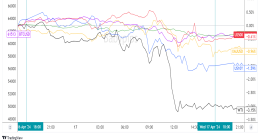
Volvo is testing new audio technology that aims to prevent what experts say could be an unfortunate side effect of self-driving cars: motion sickness.
Autonomous cars—still in the very early stages of commercialization—are being designed to let passengers focus their attention on things inside the vehicle without having to keep their hands on the wheel and eyes on the road. But riders who detach their attention from the twists and turns that their bodies experience are more likely to experience nausea and vomiting, mobility experts say.
Volvo Cars, the Swedish auto maker owned by China’s Zhejiang Geely Holding Group, hopes a solution may lie in playing unobtrusive audio cues to passengers about a second before the vehicle makes a maneuver, such as a sharp turn or acceleration.
These cues prompt passengers to adjust their posture and prepare their brains for a change in motion, decreasing the likelihood that they will feel sick, said Justyna Maculewicz, a user experience designer at Volvo who has a Ph.D. in media technology.
The car maker worked with Stockholm-based audio company Pole Position Production AB and RISE, a research institute in Sweden, to compose audio cues reminiscent of car engine sounds, rather than the voice commands or industrial beeps usually associated with in-car warnings, Dr. Maculewicz said.
“We are taking sounds which you learn over the years, that sound natural, and we are making them more attractive,” she said.
In trials, passengers said they felt less sick when the audio cues were played. Volvo’s audio research is part of the Sonic Interaction in Intelligent Cars research project, which is funded by the Strategic Vehicle Research and Innovation program run by the Swedish government and automotive industry.
The motion sickness problem may be small when compared to others faced by autonomous mobility, such as convincing the public that self-driving cars are safe. But it is important that companies reduce the likelihood of motion sickness in self-driving cars while the industry is still in its infancy, said Nick Reed, the founder of Reed Mobility, a consulting firm focused on transport innovations, and a visiting professor at the University of Surrey in the U.K.
“If your first experience of this kind of vehicle is unpleasant because you felt sick, and then you tell everyone that you’ve had an unpleasant experience, that can damage their impressions of traveling in an automated vehicle,” he said.
Other stakeholders have developed solutions to motion sickness that don’t use audio, anticipating that passengers will be less likely to look out of a self-driving car’s windows and remind the brain it is traveling.
Researchers Michael Sivak and Brandon Schoettle in 2018 patented the Universal Motion Sickness Countermeasure System, which presents light stimuli in passengers’ visual periphery while they are engaged in an activity like reading a book or watching a video. These lights aim to mimic the perception of a changing scene outside and consequently make passengers feel less nauseous.
The lights could be incorporated into devices such as the rim of a pair of glasses, goggles or other headgear, or within the interior of the autonomous vehicle itself, including the roof, dashboard and doors. The inventors are pursuing the implementation of the system, despite no longer working together at the University of Michigan, where they originally filed their patent, said Dr. Sivak, who is now the managing director of consulting firm Sivak Applied Research.
Jaguar Land Rover Ltd. last year announced it was testing software that programs autonomous vehicles to “drive in a way that reduces the impact of motion sickness.” And Nissan Motor Co. Ltd. similarly said it has developed autonomous systems under the principle that reducing unnecessary vehicle motion can prevent travel-induced nausea.
Volvo said it aims to make its next generation of cars hardware-ready for limited autonomous driving in some locations from next year. No decision has been made about how Volvo Cars will include the audio cues in the system, as the project is still in the research phase, the company said. Dr. Maculewicz, the company’s user experience designer, said she hoped to conduct further research into how the audio prompts affect the driving experience for passengers over time.
“Because as much as our sounds are not intrusive, they might become annoying at some point,” she said.
Write to Katie Deighton at [email protected]
Copyright ©2020 Dow Jones & Company, Inc. All Rights Reserved. 87990cbe856818d5eddac44c7b1cdeb8









